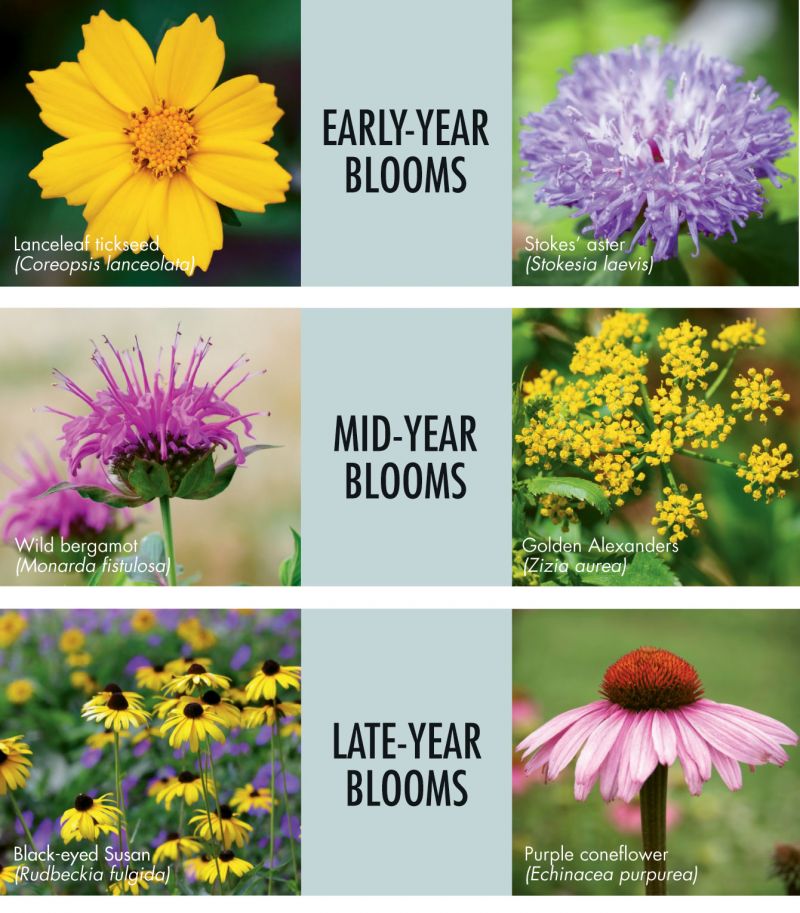
A healthy garden is host to a complex world of insects and organisms. Consider them your full-time gardeners, providing services including the all-important pollination. Bees alone pollinate 75 percent of the fruits, nuts, and vegetables grown in the U.S., reports the USDA—but as you’ve likely heard, native populations are declining.
Want to help? Serve up pollen and nectar throughout the year by planting native flowers that will bloom sequentially. Choose from those shown, clustering like species together to amp up their power of attraction. It’s vital to keep the plants well-watered until they’re established.
In fact, bees need hydration, too. Create a drinking station by filling a container with water and floating corks on top as a landing zone (for mosquito control, change the agua every three days). As for shelter, buy or make a bee house, or just leave logs in the yard to welcome nesting. Come autumn, remove mulch from full-sun areas of well-draining soil to provide an overwintering habitat.
Below, find more suggestions for blooms that'll feed native bees in various seasons:
Early Year
Green and gold (Chrysogonum virginianum)
Wild indigo (Baptisia alba)
Mid Year
Spotted beebalm (Monarda punctate)
Brown-eyed Susan (Rudbeckia triloba)
Late Year
Blue mistflower (Conoclinium coelestinum)